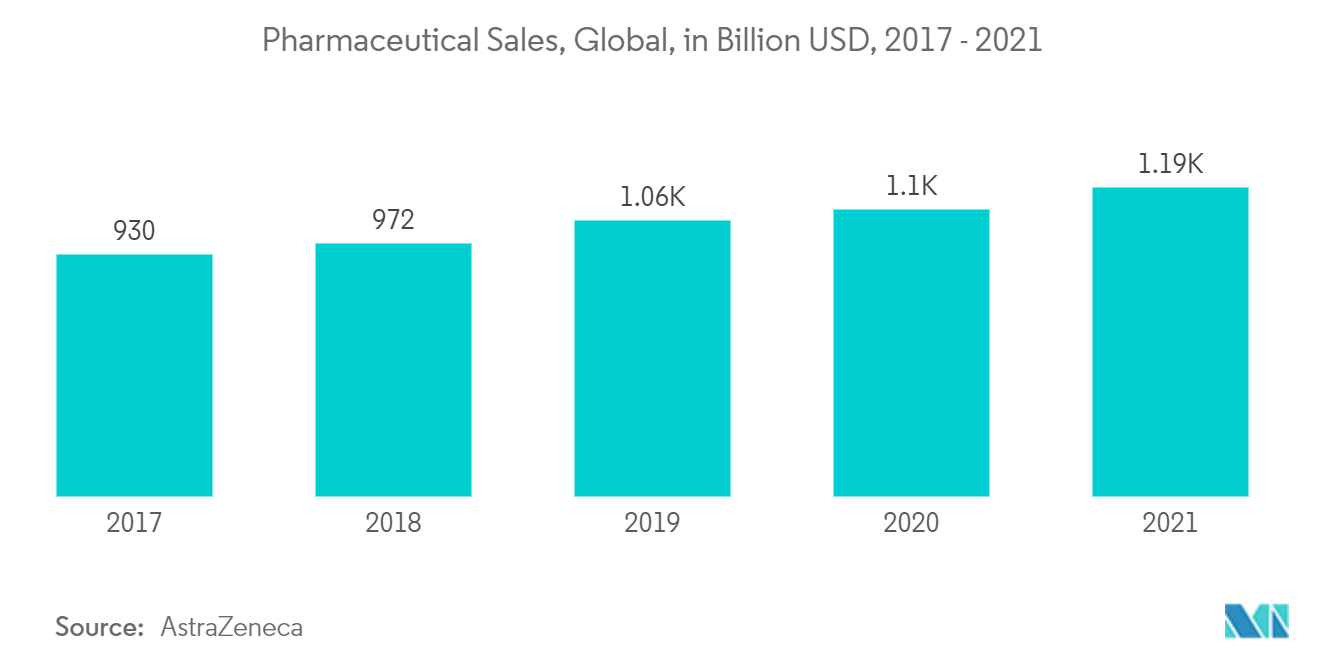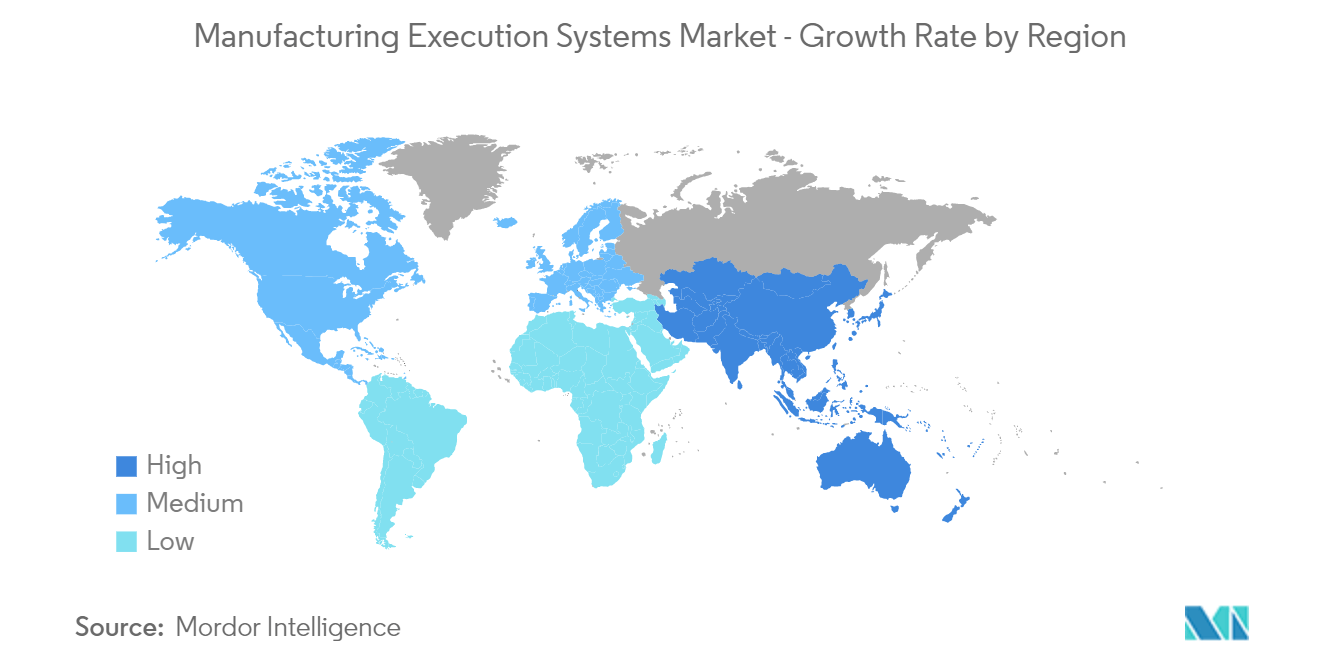Market Trends of MES Industry
Pharmaceutical and Life Sciences Industry to Hold Significant Share
- With the continuously evolving trends in the pharmaceutical industry, manufacturers are experiencing increased pressure to keep pace and modify their operations to meet changing needs. MES enables the pharmaceutical industry to reduce production costs and improve compliance with regulatory requirements significantly.
- The benefits of automating have been effectively used by pharmaceutical businesses to sustain or grow output without sacrificing safety or efficiency. Pharmaceutical businesses can now securely increase production and construct manufacturing lines more quickly and flexibly owing to automation and deployment of solutions such as manufacturing execution systems. Pre-existing trends like adaptable automation, digitization, batch manufacturing, and personalization have been amplified by the COVID-19 pandemic.
- Increasing development by the companies operating in the sector is expected to contribute to market growth. Honeywell purchased Performix Inc. in September 2021 for an unknown sum. Honeywell is a US-based provider of modular technologies for life science operational productivity, safety, and technological innovations. With this acquirement, Honeywell is pursuing a strategy to build the best-integrated application framework globally for clients in the life sciences business sector, with the possibility to increase manufacturing throughout, improve dependability, and accelerate adherence while preserving the maximum standards of performance. Manufacturing execution system (MES) technology is provided by Performix Inc., a Huston-based business, to the biotechnology and pharmaceutical sectors.
- Moreover, the growing concern about counterfeit drugs entering the supply chain has resulted in the adoption of global track and trace regulations to protect patient safety and ensure product integrity. The EU Falsified Medicine Directive (EUFMD), the US Drug Supply Chain Security Act (DSCSA), and other global regulations mean that manufacturers are now trying to ensure compliance, add innovative technologies, and increase the resources to manage the additional administrative burden. The use of barcodes, serialization numbers, and the incorporation of RFID tags inside the packaging equipment are all measures being taken to improve the quality of traceability and tracking.

North America to Hold Major Share
- North America is expected to continue to hold a significant share of the MES market over the forecast period, majorly due to the presence of several significant MES vendors, such as Honeywell (United States), Oracle Corporation (United States), Emerson (United States), and Rockwell Automation (United States) among others which drive innovation.
- North America's market leadership is also linked to increased industrial development in these regions. In advanced nations, factory execution systems' most prevalent application segments include automotive, oil and gas, and food and beverages. For instance, according to U.S. Energy Information Administration, U.S. crude oil extraction will average 11.7 million barrels per day in 2022 and 12.4 million barrels per day in 2023, exceeding the record high achieved in 2019.
- Furthermore, North American nations embrace cloud manufacturing solutions because of the rapid implementation of cloud-based networking and enterprises employing cutting-edge digital technology. The industry for cloud manufacturing implementation systems in North America is anticipated to be fuelled by efforts of government organizations, among which some are shifting online to improve information operations and by increased internet adoption.
- One of the market's potential prospects is the region's ongoing industry-wide expansions and expenditures in digitalization. The expansion of the IoT market in the regional manufacturing sector is aided by SMEs' growth and the increased digitalization of manufacturing operations by big companies like IBM and General Electric. Small and medium-sized businesses (SMEs) are becoming more adaptable in integrating new technologies with their current systems, whereas major manufacturers have considerable funds for digitization. This makes EMS adoption possible.


